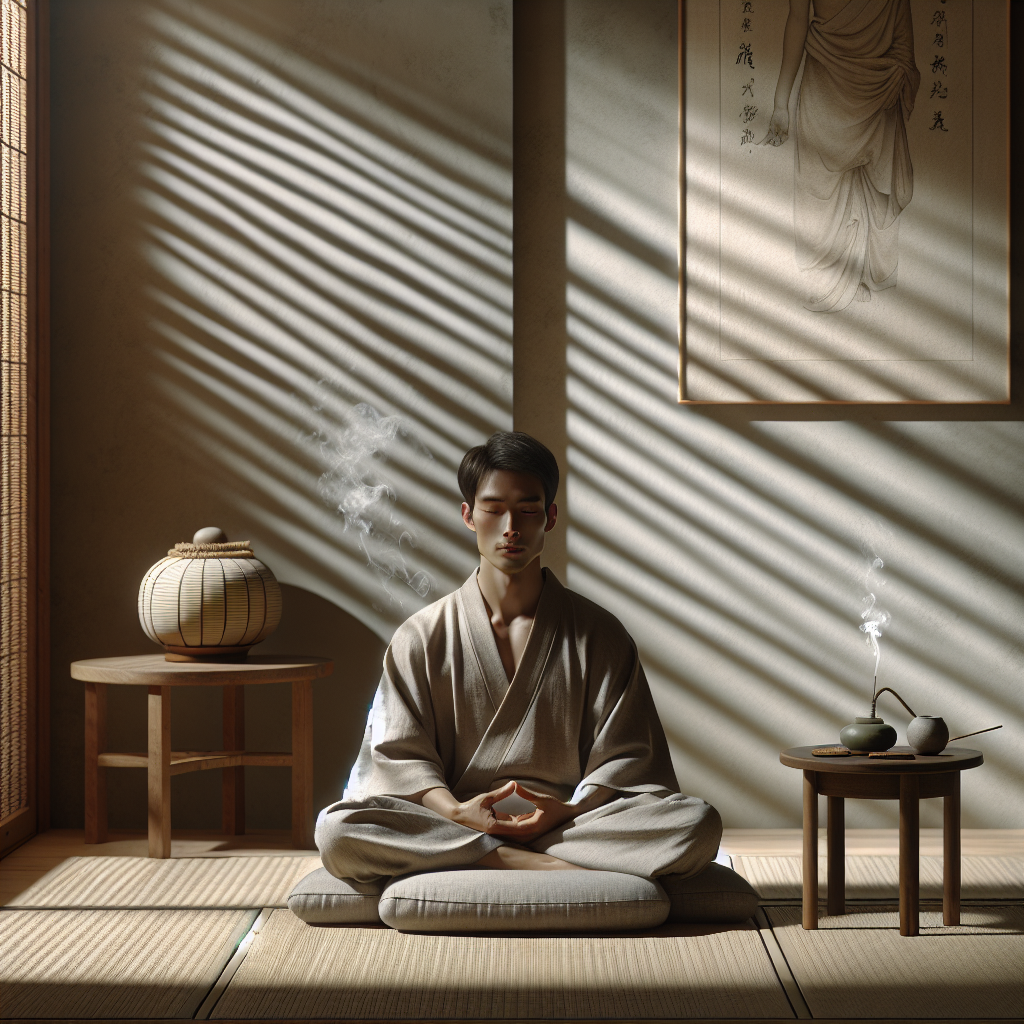
How to meditate zazen
How to Meditate Zazen: A Deep Dive into the Practice
Meditation has garnered attention in recent years for its immense benefits on mental and physical health. Among the various forms of meditation, **Zazen** stands out as a revered practice in Zen Buddhism, known for its simplicity and profundity. If you’re curious about how to incorporate this ancient practice into your life, this guide will cover all the essential aspects of Zazen meditation.
What is Zazen Meditation?
**Zazen**, translated as "seated meditation," is a core component of Zen practice. Unlike other forms of meditation that may involve visualization or mantra recitation, Zazen emphasizes an awareness of the present moment through stillness and posture. Established centuries ago in Japan, it was inspired by ancient Buddhist teachings. Through Zazen, practitioners aim to deepen their understanding of their thoughts and the nature of existence.
The Benefits of Zazen
- Enhanced Focus: Regular practice helps improve concentration and the ability to focus on tasks.
- Reduced Stress: Zazen promotes relaxation, which can help alleviate stress and anxiety symptoms.
- Emotional Stability: It fosters a greater sense of emotional resilience, allowing practitioners to respond to life's challenges more wisely.
- Increased Self-Awareness: Practicing Zazen can lead to a better understanding of oneself, including one’s thoughts, feelings, and behaviors.
Preparing for Zazen
Before you begin, it's essential to prepare both your body and environment. Here are steps to help you set the stage:
- Choose a Quiet Space: Find a serene place where you can meditate without interruptions.
- Consider Your Posture: The position in which you meditate is vital. Experiment with techniques to discover what feels comfortable yet supportive.
- Set a Time Limit: Especially for beginners, it may help to start with shorter sessions, gradually increasing the duration as comfort grows.
How to Meditate Zazen
The basic structure of Zazen is simple and straightforward. Here’s how to meditate Zazen effectively:
1. Find a Comfortable Seat
Begin by sitting in a position that allows for relaxed yet alert posture. Common seating options include:
- Cross-Legged (Lotus Position): Ideal for those with flexibility, but requires practice.
- Seiza (Kneeling): Sit on your shins with your feet flat under your thighs.
- Chair Sitting: Comfortable for those who need support; keep your feet flat on the ground.
2. Maintain the Right Posture
Once seated, focus on your posture. The following points will guide you:
- Keep your back straight but relaxed.
- Let your hands rest in your lap, forming a comfortable yet stable mudra (hand position).
- Relax your shoulders and bring your awareness to your breath.
3. Breathe Mindfully
Breathing plays a crucial role in Zazen. Here’s how to breathe mindfully during your session:
- Inhale through your nose, allowing your abdomen to expand.
- Exhale slowly, releasing tension and maintaining an awareness of your breath.
- Establish a natural rhythm, aiming to keep your breaths deep and smooth.
4. Observe Your Thoughts
As you meditate, thoughts may arise. It's essential to treat these distractions with kindness:
- Recognize your thoughts without judgment.
- Let them drift, much like clouds moving across the sky.
- Redirect your attention back to your breath whenever you find yourself caught up in thought.
5. Closing Your Session
When it’s time to conclude your Zazen session, do it mindfully:
- Begin by deepening your breath, taking a few moments to bring your awareness back.
- Gradually open your eyes and notice your surroundings.
- Spend a moment reflecting on your session, understanding that each practice is unique.
Common Challenges in Zazen Meditation
While Zazen is a straightforward practice, you may encounter some challenges along the way:
- Restlessness: It’s common to feel restless or distracted when you begin. Try acknowledging that feeling without acting on it.
- Physical Discomfort: Experiment with different postures to find what works best for you. Use cushions or meditate on a chair if needed.
- Mind-Wandering: If you find your mind drifting, gently bring your focus back to your breath or body sensations.
Integrating Zazen into Daily Life
To reap the full benefits of Zazen, consider incorporating it into your routine. Here are some tips to help you get started:
- Designate a Daily Time: Setting aside a specific time each day will help establish a habit.
- Create Rituals: Pair your meditation practice with other calming activities, like journaling or tea drinking.
- Join a Community: Support from like-minded individuals can enhance your practice. Seek out local Zen centers or online groups.
Frequently Asked Questions About Zazen
As you explore Zazen meditation, you may have some questions. Here are answers to a few common queries:
Is Zazen suitable for beginners?
Absolutely! Zazen is accessible for all levels. Beginners are encouraged to start with short sessions and gradually increase their duration.
How long should I meditate?
For beginners, starting with 10-15 minutes is often recommended, gradually increasing to 30 minutes or more as they feel comfortable.
Do I need to be in a Zen tradition to practice Zazen?
No, anyone can practice Zazen, regardless of their spiritual or philosophical background. It is about personal exploration and self-discovery.
Conclusion
Meditating Zazen unlocks a powerful tool for self-reflection and awareness. While the practice may require patience and consistency, the rewards extend far beyond the meditation cushion. By understanding the essence of Zazen and committing time to deepen your practice, you may find serenity, focus, and clarity in your everyday life.
“Meditation is not about becoming a different person. It's about becoming who you really are.” - Anonymous
Whether you are new to meditation or well-versed in its many forms, Zazen offers a pathway towards inner peace and understanding. Embrace the journey and allow the practice to evolve naturally, leading you toward personal growth and fulfillment.
By Guest, Published on October 1st, 2024